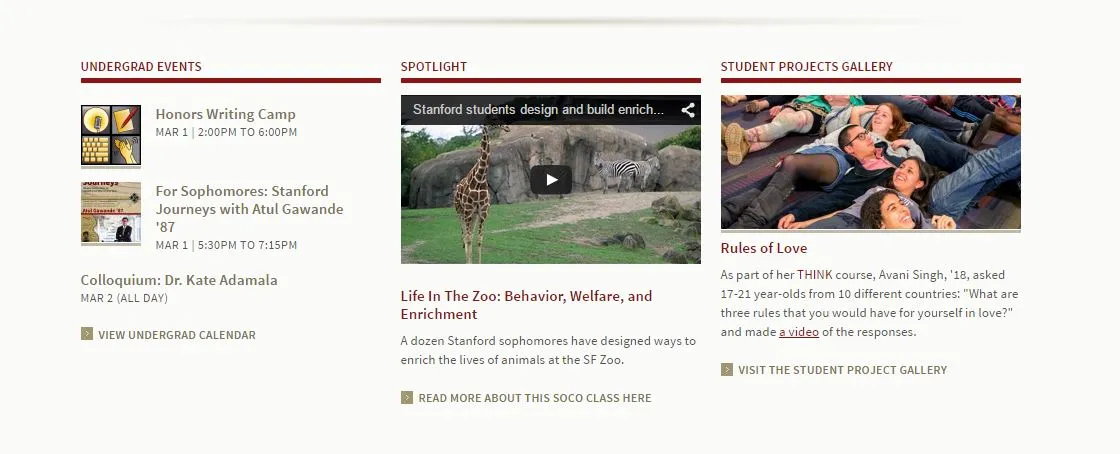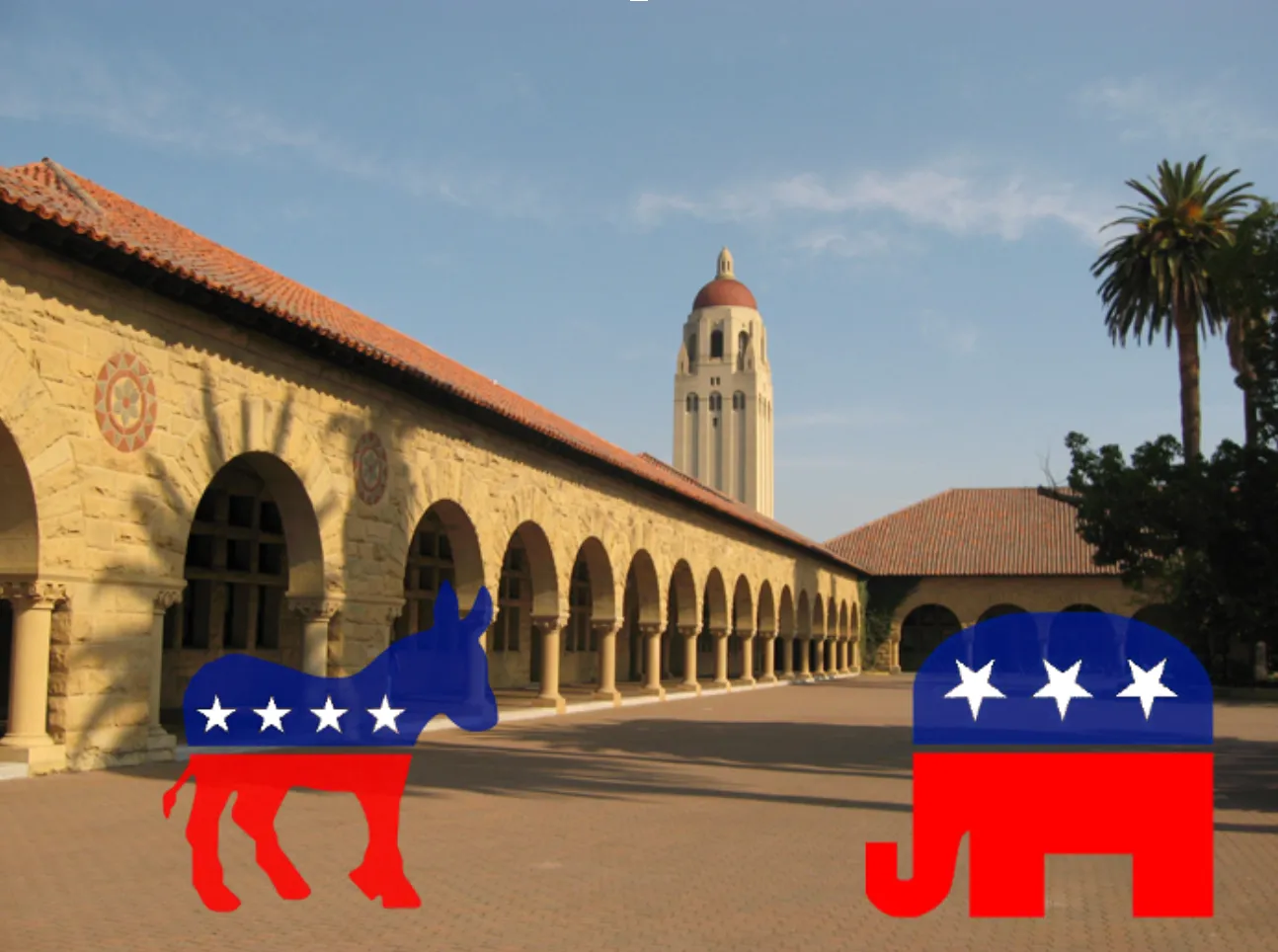Table of Contents
As I discussed in an earlier post, President Hennessy is now entering his eleventh year as president of Stanford university (POSU). In my post, I speculated about his future as president and, when he chooses to retire, who might replace him. In this series of posts, I intend to substantiate my discussion with some basic information about the tenure of Stanford’s 10 full presidents (and one acting president). Whence did they come? How long were they there? How have they changed?
In my last post (linked above), I discussed lengths of tenure for Stanford’s presidents and postulated that Hennessy would be leaving in the next two years or so. In this post, I will discuss the issue of who might replace him when the time comes, based on the recent history of Stanford’s presidents. To begin, let’s look at the role held by each of Stanford’s 10 presidents immediately prior to their appointment as president:
- David Starr Jordan: president of another university (Indiana University)
- John Casper Branner: vice-president of Stanford
- Ray Lyman Wilbur: dean of Stanford Medical School
- Donald B. Tressider: private sector (business)
- John Wallace Sterling: private sector (Huntington Library and Art Gallery)
- Kenneth S. Pitzer: president of another university (Rice University)
- Richard W. Lyman: provost of Stanford
- Donald Kennedy: provost of Stanford
- Gerhard Casper: provost of another university (University of Chicago)
- John LeRoy Hennessy: provost of Stanford
See any pattern?
6/10 presidents came directly out of Stanford in some fashion. 2/10 came from other universities. Two came from outside academia altogether. But the most glaring statistic is the following: 3/4 of the most recent presidents were provost first (albeit not, as this article originally indicated, all at Stanford). Every one of them did some time in the position of provost before ascending to center stage.
Given this, should we start anointing Provost Etchemendy now? After all, the last two presidents before Lyman (the first in the provostial line) burned out under the weight of student protest, unable to handle the pressure. Surely, Etchemendy knows the campus as well as anyone and better than most, even if massive protests are unlikely. There are a couple of reasons to hold the oil and wait on the blessings.
First, there’s this gem: each of the four provost-to-president transformations took place less than four years after the person had assumed the role of provost, with an average “training” time of only about 2 years. Etchemendy has been in his position for as long as Hennessy (this year is his eleventh year as well). At this point, he’s more of a career provost than president-in-waiting.
Second, there’s Etchemendy’s own feelings about the subject. As the Harvard Crimson reported in 2007, Etchemendy expressed no interest in leaving “the best position in higher education.” While few can fault him for remaining with the better shade of red, it’s also an interesting signal towards his opinion about Stanford’s top spot. There are two ways to read things. The first explanation is that Etchemendy has no interest in being university president: after all, why turn down a premier university? The second explanation is that he is awaiting his chance for the ultimate position that is the Stanford presidency, when Hennessy retires. I don’t have any special read on this situation, but my feeling is that Etchemendy won’t succeed Hennessy; he’s been in his position for too long to bring a truly fresh vision to Stanford (counterpoint: Stanford has been incredibly successful over this past decade, do we need a new vision?) and hasn’t been making many public moves to raise his visibility in the broader community.
 If Etchemendy doesn’t succeed Hennessy, who will? Obviously, anything is possible, but I see two main scenarios. The first is that Harry Elam, the newly appointed VPUE, ascends to the presidency in a few years, when both Hennessy and Etchemendy exit the scene. This scenario is dependent on a few things. First, and most importantly, Elam must be able to make the money rain on Stanford. The president of Stanford is, in part, the lead university fundraiser and Elam is following in the footsteps of John Bravman, who was incredibly successful, by all accounts, in that function. Any struggles as a fundraiser could doom Elam’s candidacy. Elam’s ascension to the position would give Stanford its first president who was not a white male, which might give a boost to his candidacy as well, as it would show that Stanford not only has diverse faculty, but also leadership.
If Etchemendy doesn’t succeed Hennessy, who will? Obviously, anything is possible, but I see two main scenarios. The first is that Harry Elam, the newly appointed VPUE, ascends to the presidency in a few years, when both Hennessy and Etchemendy exit the scene. This scenario is dependent on a few things. First, and most importantly, Elam must be able to make the money rain on Stanford. The president of Stanford is, in part, the lead university fundraiser and Elam is following in the footsteps of John Bravman, who was incredibly successful, by all accounts, in that function. Any struggles as a fundraiser could doom Elam’s candidacy. Elam’s ascension to the position would give Stanford its first president who was not a white male, which might give a boost to his candidacy as well, as it would show that Stanford not only has diverse faculty, but also leadership.
And obviously, it could really be anyone. Stanford could recruit from other professors, deans, or even (unlikely) outside professionals from other schools or private institutions. Over here, we’ll be waiting and watching.







